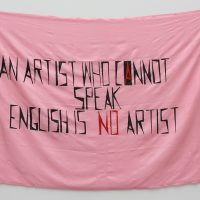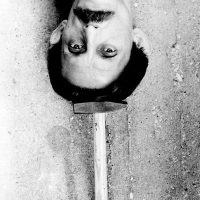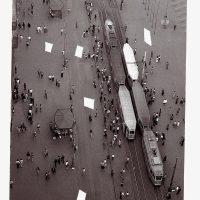Ludwig Múzeum – Kortárs Művészeti Múzeum gyűjteménye / Collection of Ludwig Museum – Museum of Contemporary Art
a művész gyűjteménye / collection of the artist
Ludwig Múzeum – Kortárs Művészeti Múzeum gyűjteménye / Collection of Ludwig Museum – Museum of Contemporary Art
Ludwig Múzeum – Kortárs Művészeti Múzeum gyűjteménye / Collection of Ludwig Museum – Museum of Contemporary Art
Throughout his diversified work, Stilinović explores ideological signs and their social aspects. His works criticise the language of politics, the institutional hierarchy within art, and the role of money and labour in society using the devices of irony, paradox and manipulation.
From 1975 he was member of The Group of Six Artists with his brother and friends, whose outside exhibitions-actions were an occasion for talk about art with a public that otherwise would never have gone into a gallery.
An interest in language was at the base of most of his earlier works: primarily language related with the visual sign in collages in which he used poetic speech, political and everyday expressions. In his artist’s books and Stilinović started to use slogans on the theme of work in which production and progress were celebrated, Marxist phrases about the revolution of the working class, metaphors and symbols, particularly the symbolism of red. In many of his works, like the installation Red-Pink (1970s), Stilinović attempted to have a more normal and de-ideologised use of the colour.
During the 1980s, he created a group of works comprised of several hundred pieces under the title, Exploitation of the Dead, in which he explored “dead signs”; i.e., emptied signs that had lost their meaning, whether they belonged to symbols of Communist ideology or to bygone artistic practices, such as the Russian avant-garde or Socialist Realism. Stilinović believes that an artist, including himself, has to be aware of the fact that using these dead symbols means exploitation.
His critical interest in the social significance of money, in the rituals, conventions and ideologies that define the functions of money in society, is displayed in the Works with Money in its many facets. Sing! (1980), a work from which the exhibition took its title, shows the artist with a banknote pasted on his forehead, ironically referring to the position of an artist exposed to the functioning of society, whereby he must sing as others tell him to. The role of an artist is in the focus of several other works, such as the Artist at Work (1978), a photographic series belonging to the Ludwig Museum’s collection (being showcased at the exhibition of the collection), or the caption that has become one of his signature works, stating that AN ARTIST WHO CANNOT SPEAK ENGLISH IS NO ARTIST (1992).
Accompanying to the exhibition a comprehensive catalogue is going to be published, including essays by Branka Stipancić, Georg Schöllhammer, Ellen Blumenstein, Ana Janevski et al.



